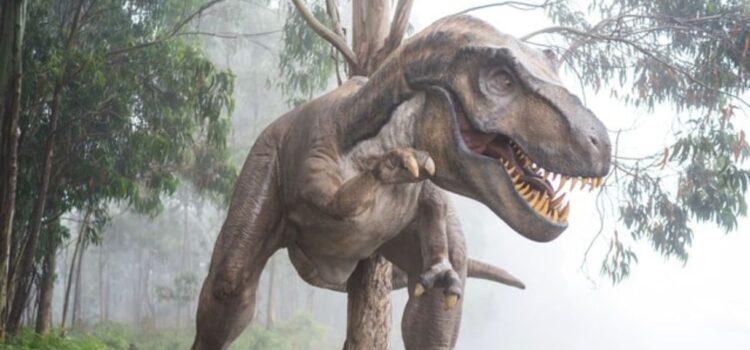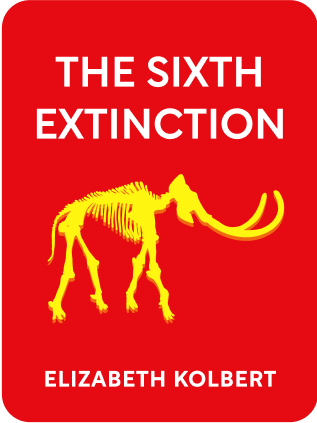

This article is an excerpt from the Shortform book guide to "The Sixth Extinction" by Elizabeth Kolbert. Shortform has the world's best summaries and analyses of books you should be reading.
Like this article? Sign up for a free trial here .
What are the two major theories of extinction? How do they explain the mass extinctions that have happened on planet Earth? Which theory holds more weight?
Theories of extinction can be categorized into two major schools of thought: catastrophism and uniformitarianism. Catastrophists believe extinctions happen as a result of major catastrophes. Uniformitarians, on the other hand, believe in a gradual process of extinction due to evolution.
Keep reading to learn about theories of extinction and how they were developed.
The Theories of Extinction
The current theories of extinction evolved from a series of paradigm shifts.
In the 19th century, those who believed only in gradual extinction as a result of evolution were called uniformitarians. However, during Darwin’s time, humans drove one of Europe’s most unusual species, the great auk, to extinction, contradicting his theories of extinction: that species went extinct only slowly, through competition and natural selection.
In the late nineteen-seventies in Italy, American geologist Walter Alvarez discovered traces of the asteroid that ended the Cretaceous period, causing the fifth mass extinction, which wiped out 75% of all species.
He was studying rock layers in the Gola Del Bottaccione gorge outside the town of Gubbio, Italy, which is north of Rome. The region once lay at the bottom of the sea. The remains of marine animals built up through millennia, eventually creating the Apennine Mountains and elevating limestone cliffs.
Between the diagonal bands of limestone reflecting different time periods, Alvarez saw a thin layer of clay that contained none of the marine lifeforms seen in the limestone layers below or above it. Something had wiped out the foraminifera—tiny creatures with calcite shells that fossilize—below the clay layer; when forams appeared later in the limestone layer above the clay, they were different species and much smaller. Alvarez determined that the larger forams seen below the clay layer had vanished at the time dinosaurs were known to have died off (the End Cretaceous period).
Further, Alvarez and his father Luis, a physicist at UC Berkeley, tested the samples from the clay layer and found it contained a huge amount of iridium, a chemical element rare on the surface of the earth but common in meteorites. Similarly, the Alvarezes found high levels of iridium in samples of late-Cretaceous clay in limestone cliffs in Denmark and from the South Island of New Zealand.
Finally, after ruling out numerous possible explanations for the astronomical iridium levels, they theorized that 65 million years ago, a six-mile-wide asteroid struck the earth. It exploded on impact, releasing energy equivalent to more than a million H-bombs. Dust including iridium spread around the earth, creating darkness and causing temperatures to plunge. There was mass extinction.
The Alvarezes published their asteroid strike theory in 1980 in an article in Science titled “Extraterrestrial Cause for the Cretaceous-Tertiary Extinction,” which generated excitement in the science community and the popular press. However, many paleontologists rejected their theories of extinction on the grounds that they came from outside their discipline (from geology/physics).
More Evidence Backs Asteroid Theory
As far back as the mid-1800s, scientists had noticed a large gap in fossil records of tens of millions of years between plants and animals found in rocks from the late Cretaceous period and the start of the next period, the Tertiary.
For instance, late-Cretaceous sediment contained remains of numerous species of belemnites, squid-like creatures, but there weren’t any in more recent deposits. The same was true for sea creatures called ammonites, which created spiral shells.
But uniformitarians couldn’t imagine why these would disappear suddenly—so up to 1980, when the Alavarezes published their ground-breaking paper, most scientists continued to attribute the disappearances to an incomplete fossil record. Some even argued that a slow, continuous crisis led to mass extinction.
Ever since Alvarezes published their impact theory, uniformitarian paleontologists finally began changing their minds about sudden mass extinction.
Today, the paradigm of extinction science combines elements of both theories of extinction (catastrophism and uniformitarianism): Life on earth consists of long periods of almost imperceptible change punctuated by calamity. Or, as one researcher described it, “long periods of boredom interrupted occasionally by panic.”

———End of Preview———
Like what you just read? Read the rest of the world's best book summary and analysis of Elizabeth Kolbert's "The Sixth Extinction" at Shortform .
Here's what you'll find in our full The Sixth Extinction summary :
- How humans have set in motion a sixth mass extinction
- The 5 mass extinction events that occurred over the last 500 million years
- Why human ingenuity might be able to save the human species from extinction






